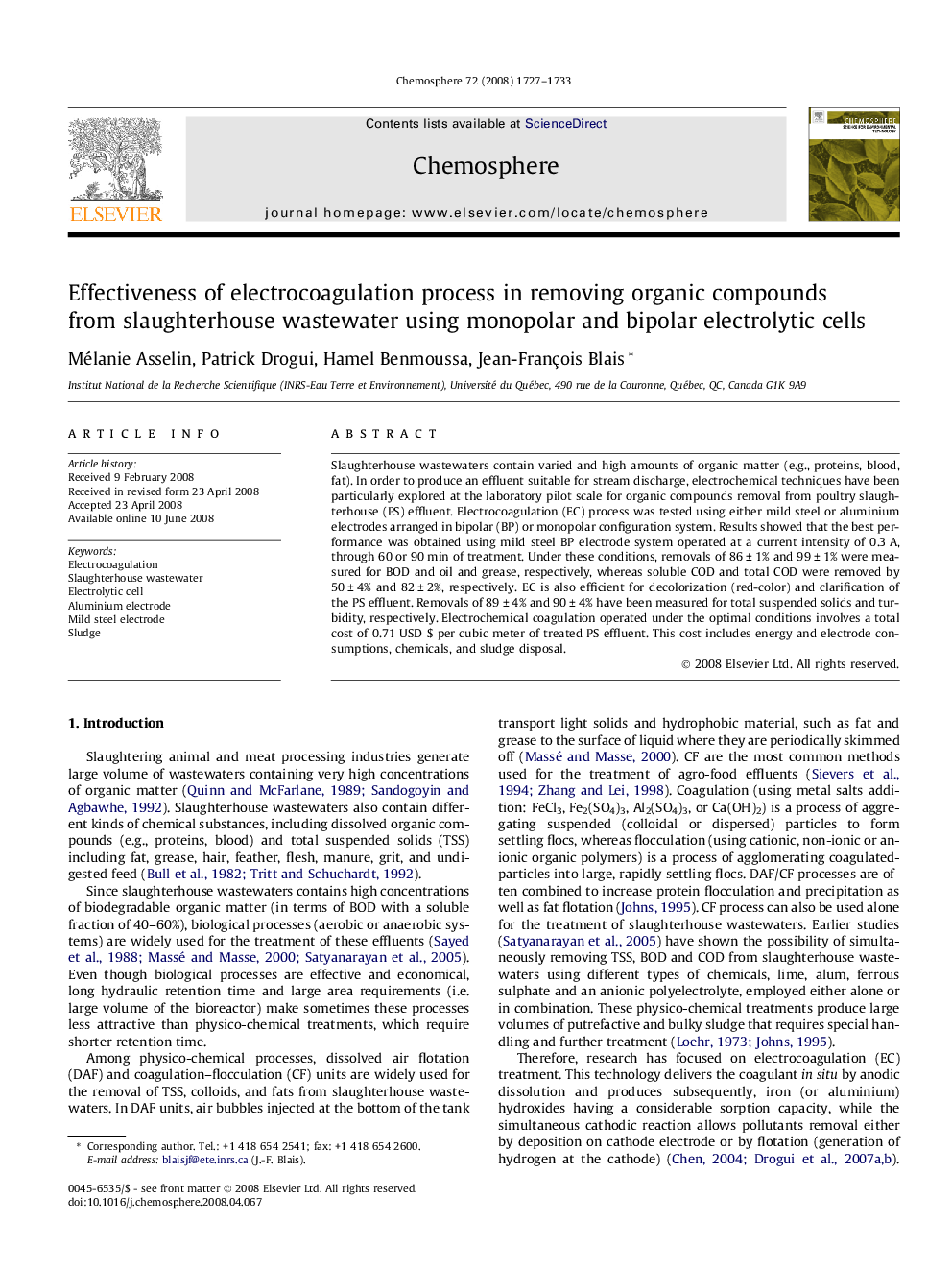| کد مقاله | کد نشریه | سال انتشار | مقاله انگلیسی | نسخه تمام متن |
|---|---|---|---|---|
| 4413426 | 1307677 | 2008 | 7 صفحه PDF | دانلود رایگان |

Slaughterhouse wastewaters contain varied and high amounts of organic matter (e.g., proteins, blood, fat). In order to produce an effluent suitable for stream discharge, electrochemical techniques have been particularly explored at the laboratory pilot scale for organic compounds removal from poultry slaughterhouse (PS) effluent. Electrocoagulation (EC) process was tested using either mild steel or aluminium electrodes arranged in bipolar (BP) or monopolar configuration system. Results showed that the best performance was obtained using mild steel BP electrode system operated at a current intensity of 0.3 A, through 60 or 90 min of treatment. Under these conditions, removals of 86 ± 1% and 99 ± 1% were measured for BOD and oil and grease, respectively, whereas soluble COD and total COD were removed by 50 ± 4% and 82 ± 2%, respectively. EC is also efficient for decolorization (red-color) and clarification of the PS effluent. Removals of 89 ± 4% and 90 ± 4% have been measured for total suspended solids and turbidity, respectively. Electrochemical coagulation operated under the optimal conditions involves a total cost of 0.71 USD $ per cubic meter of treated PS effluent. This cost includes energy and electrode consumptions, chemicals, and sludge disposal.
Journal: Chemosphere - Volume 72, Issue 11, August 2008, Pages 1727–1733